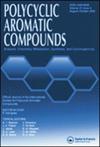脂肪含量和不同烹饪工艺对烤鸡串中多环芳烃潜在健康问题的影响
IF 2.6
3区 化学
Q2 CHEMISTRY, ORGANIC
引用次数: 0
摘要
本研究调查了不同脂肪含量和烹饪技术对烤鸡串中多环芳烃存在的影响,以及土耳其人口的饮食暴露和潜在健康风险。建立了高效液相色谱法(HPLC-UV)测定鸡肉样品中16种多环芳烃(PAH)的方法。检测限(LOD)为0.44% ~ 1.14%,定量限(LOQ)为1.45% ~ 3.56%,回收率为63.12% ~ 101.50%,相对标准偏差(RSD)为0.14% ~ 3.16%。研究结果表明,在分析的化合物中,BaA是最主要的多环芳烃化合物,木炭烹饪技术导致烤鸡串中BaP和PAH4浓度的积累最高。此外,观察到与高脂肪含量相关的多环芳烃水平显著增加。此外,还发现炭烤、全熟、高脂肪鸡肉样品中BaP和PAH4的估计日摄入量(EDI)更高。因此,土耳其人口中鸡肉捐赠者样本的暴露边际(MOE)值高于10,000,这一事实表明,人们的担忧程度较低。本文章由计算机程序翻译,如有差异,请以英文原文为准。
The Impact of Fat Contents and Different Cooking Processes on the Potential Health Concerns of Polycyclic Aromatic Hydrocarbons in Chicken Doner Kebabs
This study investigated the effects of different fat contents and cooking techniques on the presence of PAHs in chicken doner kebabs, as well as the dietary exposure and potential health risks for the Turkish population. The methodology for the detection and quantification of 16 PAH compounds in chicken doner samples using high-performance liquid chromatography (HPLC-UV) was validated. The limit of detection (LOD), quantification (LOQ), recovery, and relative standard deviation (RSD) were found to be 0.44%–1.14%, 1.45%–3.56%, 63.12%–101.50%, and 0.14%–3.16%, respectively. Our findings revealed that, among the analyzed compounds, BaA was the most dominant PAH compound, and that the charcoal cooking technique resulted in the highest accumulation of both BaP and PAH4 concentrations in chicken doner kebabs. Additionally, a significant increase in PAH levels was observed in relation to higher fat content. Moreover, it was found that the estimated daily intake (EDI) of BaP and PAH4 was higher in charcoal-grilled, well-done, high-fat chicken doner samples. As a result, the fact that the Margin of Exposure (MOE) values calculated for chicken doner samples across the Turkish population are above 10,000 indicates a low level of concern.
求助全文
通过发布文献求助,成功后即可免费获取论文全文。
去求助
来源期刊

Polycyclic Aromatic Compounds
化学-有机化学
CiteScore
3.70
自引率
20.80%
发文量
412
审稿时长
3 months
期刊介绍:
The purpose of Polycyclic Aromatic Compounds is to provide an international and interdisciplinary forum for all aspects of research related to polycyclic aromatic compounds (PAC). Topics range from fundamental research in chemistry (including synthetic and theoretical chemistry) and physics (including astrophysics), as well as thermodynamics, spectroscopy, analytical methods, and biology to applied studies in environmental science, biochemistry, toxicology, and industry. Polycyclic Aromatic Compounds has an outstanding Editorial Board and offers a rapid and efficient peer review process, as well as a flexible open access policy.
 求助内容:
求助内容: 应助结果提醒方式:
应助结果提醒方式:


